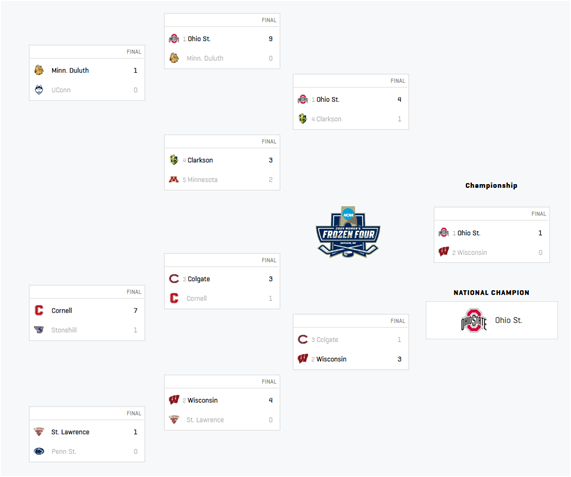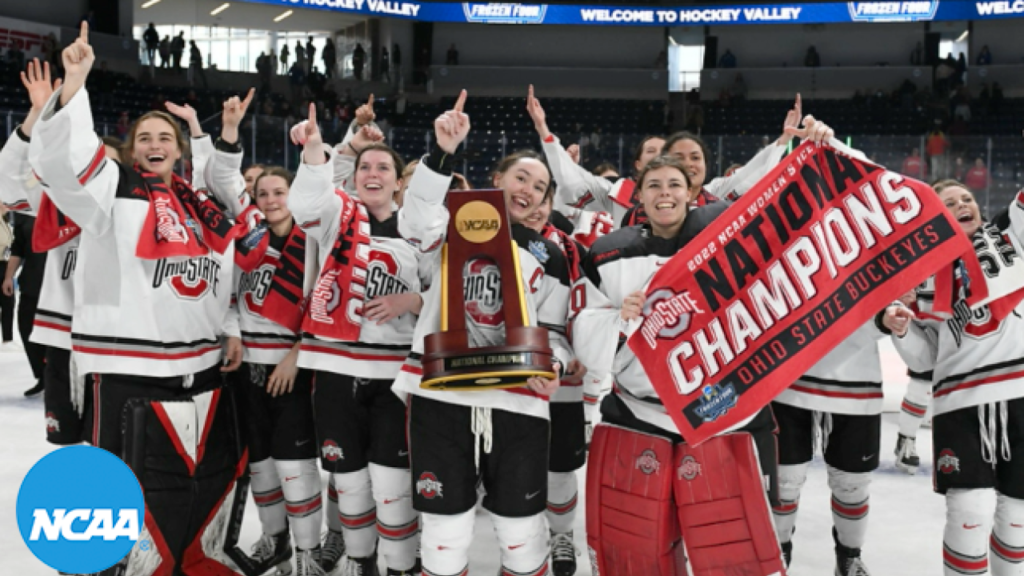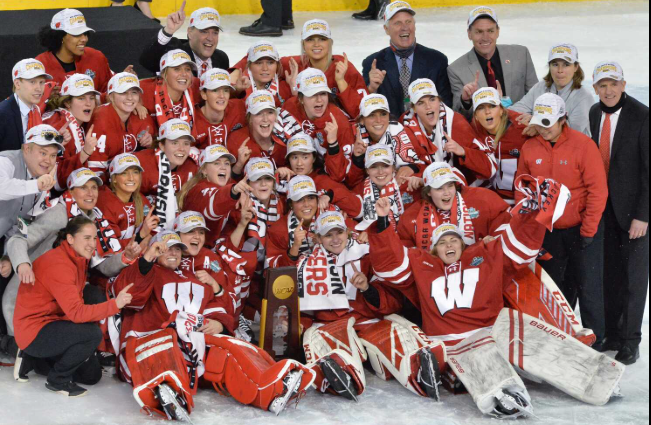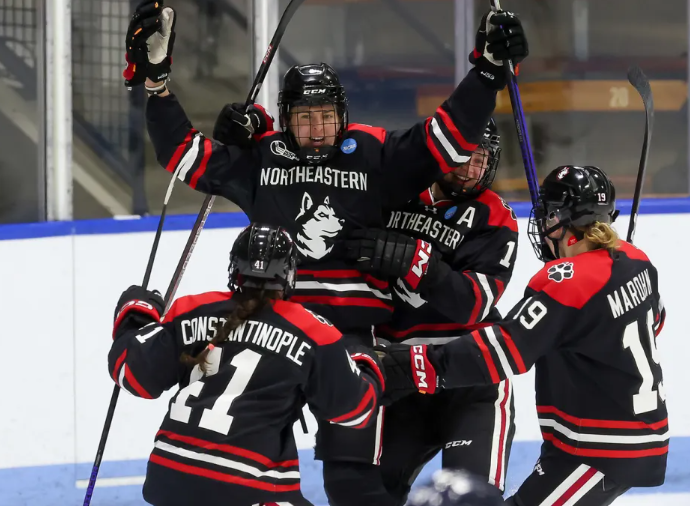
This coming weekend all 5 conferences will be playing playoffs games with the conference winners getting automatic bids to the NCAA DI Women’s Ice Hockey Championship. This season will be the second year that the NEWHA conference champion will get an automatic bid to be one of the 11 NCAA playoff teams. Being part of the women’s hockey playoffs would imply that that the NEWHA winner would be at least the 11th best team in DI women’s hockey – or at least close to it. But that is not the case. While the NEWHA conference champion has earned their spot in the playoffs, I am recommending that the lowest ranked conference champion have a play-in game. Here is the rationale…
This season I have tracked every game the NEWHA conference teams have played against non-conference opponents. The results aren’t pretty for the NEWHA teams – with the non-conference teams outscoring NEWHA 241-26.
In fact, the best NEWHA team is not close to being a Top 15 in the polls and is essentially taking the sport of a much better team in the playoffs. So, Given the NEWHA regular season record versus non-conference teams, the Pairwise Rankings and MyHockeyRankings, the NEWHA teams continually rank near the bottom of all NCAA DI teams.
NCAA Women’s DI Hockey MyHockeyRankings as of 02-26-2025

In MHR, the entire NEWHA conference are the 8 bottom rated teams.
NCAA Women’s DI Hockey Pairwise Rankings as of 02-24-2025

And in the Pairwise, the best team is Long Island University at #28. But keep in mind the Pairwise weights “wins” heavily, and clear the top NEWHA teams like LIU beat the other NEWHA teams the most and thus boosted their ranking. Pairwise seems to break down at the bottom of the rankings due to over-valuing bad teams beating each other. Given the data in my season-long analysis, I would use the MHR ranking as a better indicator of how good a team is relative to their peers.
In NCAA men’s basketball, there are play-in games featuring the last four at-large teams and the four lowest-seeded automatic qualifiers. I am recommending something similar, but just a single game. And yes, I am aware of the recent increase in the number of teams. The reason why there are only 11 teams in the current playoff format is to keep it proportional with the number of teams that make the men’s tournament.
Right now, if it very likely that three of the following four Top 15 teams won’t be in the playoffs – Quinnipiac (#9), Clarkson (#10), St Cloud State (#11) and Boston University (#12) unless they win their conference. It’s a shame so many Top 11 teams won’t be in the playoffs. Having a play-in game would at least give one of these ranked teams a chance. As a reminder, last year’s NEWHA champion, played the #7 seed Cornell and lost 7-1 in the opening round.
Given all this data, it seems inequitable that one (or all) of these Top 15 teams are not given a chance to compete in the national playoffs, when clearly a much weaker team (even though they won their conference) is being given the opportunity. A play-in game would at least make this more fair.
One last thought. Assuming Long Island University wins the NEWHA playoffs, they performed the best against non-conference opponents recently. They only lost to Princeton (#15 in polls) 4-2, and vs. Robert Morris University (#38 Pairwise), LIU tied 1-1 and lost 3-1. But the reality is it would be unlikely any NEWHA team could beat any Top 11 team.
